This week on the Award Winning Naked Scientists we find out about stem cells and cloning. We discuss the elusive 'stemness' that allows cells to specialise, and learn about cloning in the post-Dolly the sheep era. We also find out how genetics has revealed that neanderthals were redheads, how soap affects shoals of fish and some turtles come equipped with anti-roll bars. We also pay a visit to the Manchester Science Festival for a chat with Johnny Ball, and in Kitchen Science, we "clone at home" and find out the future of the humble banana.
In this episode

Scientists discover bacterial cell suicide switch
Scientists in Israel have uncovered a chemical suicide signalling pathway that turns E. coli into the bacterial equivalent of lemmings, a discovery which could lead to a new generation of powerful antibiotics.
 Writing in this week's Science, Ilana Kolodkin-Gal and her colleagues at the Hebrew University in Jerusalem describe the discovery of a "death factor", which triggers E. coli to kill themselves. E. coli carry a gene "module" called mazEF, which produces a long-lived toxin called MazF and a short-lived anti-toxin MazE. So long as the genes remain switched on all is well, because the antitoxin blocks the action of the toxin. But if the cell is stressed - such as might occur when bacteria are attacked by viruses, or if food becomes scarce, the gene switches off and the short-lived antitoxin disappears. This leaves the stable MazF unchallenged to kill the bacterium, which it does by chewing up genetic material inside the cell. The bugs activate this system when their population exceeds a certain level, the purpose being to ensure the survival of other members of their colony, because self-sacrifice can be used to deal with virus infections or lack of nutrients. However, the chemical identity of the molecule that trips this suicide switch, known as EDF was not known.
Writing in this week's Science, Ilana Kolodkin-Gal and her colleagues at the Hebrew University in Jerusalem describe the discovery of a "death factor", which triggers E. coli to kill themselves. E. coli carry a gene "module" called mazEF, which produces a long-lived toxin called MazF and a short-lived anti-toxin MazE. So long as the genes remain switched on all is well, because the antitoxin blocks the action of the toxin. But if the cell is stressed - such as might occur when bacteria are attacked by viruses, or if food becomes scarce, the gene switches off and the short-lived antitoxin disappears. This leaves the stable MazF unchallenged to kill the bacterium, which it does by chewing up genetic material inside the cell. The bugs activate this system when their population exceeds a certain level, the purpose being to ensure the survival of other members of their colony, because self-sacrifice can be used to deal with virus infections or lack of nutrients. However, the chemical identity of the molecule that trips this suicide switch, known as EDF was not known.
To find it, the team collected extracts from the media used to grow dense cultures of bacteria, and then picked through the chemicals individually to identify the EDF molecule, which turns out to be a short protein sequence. The researchers were then able to make an artifical version of the protein that could fool small numbers of E. coli into thinking they were part of a much larger population, which primed their mazEF cell suicide programme. When the bugs were then stressed with a small dose of an antibiotic, they obliged by killing themselvse.
Coming at a time when the world is fast running out of antibiotic options, the discovery of this pathway could prove critical in the discovery of new ways to combat the rise of the superbug.

Soap suds mess up shoals
If you thought the soap suds you flush down the drain every time you wash your hands or take a shower were innocent, then think again. A new study has shown that even very low levels of chemicals found commonly in household products can cause fish to loose their ability to huddle together in tightly knit shoals, which is a vital behaviour to help them avoid being caught by predators.
The compound is called 4-nonylphenol or 4NP, and is also used in sewage treatment works and in pesticides.
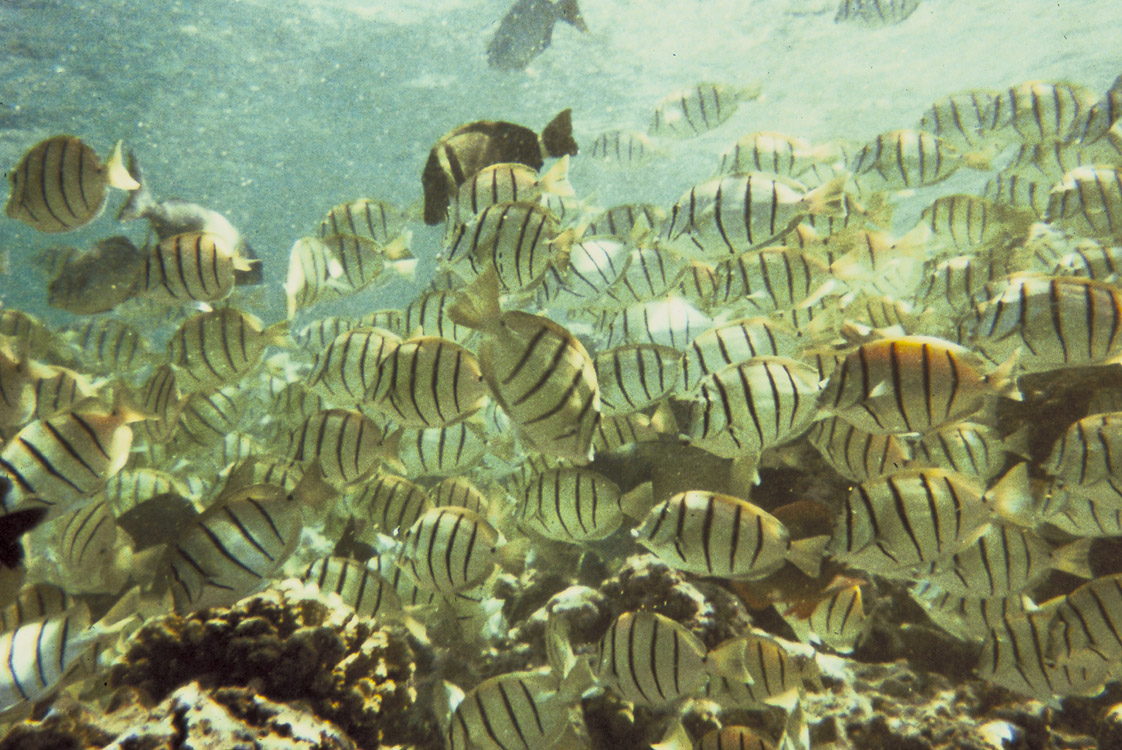 Researchers from Mount Alison University in New Brunswick province, Canada, tested the effect of 4NP on banded killifish that live in the lakes of North America. In experimental tanks, when the fish were subjected to just 1 microgram of 4NP per litre - which within the permissible levels for rivers - they tended to swim at least twice as far away from each other than when they were swimming in water with no 4NP in it.
Researchers from Mount Alison University in New Brunswick province, Canada, tested the effect of 4NP on banded killifish that live in the lakes of North America. In experimental tanks, when the fish were subjected to just 1 microgram of 4NP per litre - which within the permissible levels for rivers - they tended to swim at least twice as far away from each other than when they were swimming in water with no 4NP in it.
It's thought that the 4NP interferes with the fishes' ability to smell each other, which is how they know to stick together in tight shoals. Fish tend to develop a particular smell depending on where they have been and what they have been eating - so an individual fish prefers to hang out with another fish that smell similar to themselves.
And 4NP is lipophillic which means it tends to stick to fatty substances, including fish, so it seems that the compound might form a coat on the skin of fish masking their natural smell.
The contaminant doesn't seem to alter their ability to detect other smells, such as food items that were hidden around the tanks. But it does seem to actively repel fish - the researchers also put a single fish in a long corridor of water and offered it two streams of water to swim towards. Each time the fish swam away from the stream that passed over another fish that had previously been soaked in mild 4NP solution for an hour.
The take home message from this piece of research is that we shouldn't assume that just because a chemical at certain concentrations doesn't kill animals and plants, certainly doesn't rule out the possibility that sub-lethal affects are altering the ability of those creatures to survive in the wild, especially when the natural world is becoming such a cocktail of different chemicals and pollutants that we throw into it.
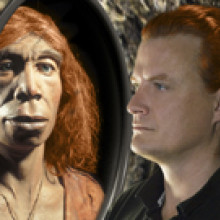
As well as red blooded, Neanderthals were red-headed
A trawl through the emerging neanderthal genome has revealed that our hominid relatives, the Neanderthals, probably had red-heads amongst their numbers.
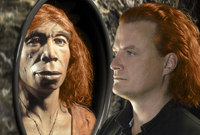 Writing in this week's Science, Carles Lalueza-Fox from the University of Barcelona, together with an international team of collaborators, successfully sequenced the melanocortin 1 receptor gene (mc1r) from two Neanderthal specimens, one Spanish and one Italian. The mc1r gene controls how cells respond to a hormone called MSH - melanocyte stimulating hormone. It's known that amongst modern humans variations in this gene affect the amounts of the two pigment moelcules eumelanin and phaeomelanin that are made in the skin, with red heads and pale skinned individuals making proportionally less eumelanin. When the researchers used the polymerase chain reaction to copy part of this gene from their Neanderthal remains they found a variant of the gene never before seen amongst modern humans. To find out what effect it might have they added the gene to cells grown in the dish and then treated the cells with MSH. The cells behaved almost identically to cells containing the mc1r gene from modern pale-skinned humans, suggesting that the Neanderthals who originally carried this gene variant would also have had a pale complexion and red hair.
Writing in this week's Science, Carles Lalueza-Fox from the University of Barcelona, together with an international team of collaborators, successfully sequenced the melanocortin 1 receptor gene (mc1r) from two Neanderthal specimens, one Spanish and one Italian. The mc1r gene controls how cells respond to a hormone called MSH - melanocyte stimulating hormone. It's known that amongst modern humans variations in this gene affect the amounts of the two pigment moelcules eumelanin and phaeomelanin that are made in the skin, with red heads and pale skinned individuals making proportionally less eumelanin. When the researchers used the polymerase chain reaction to copy part of this gene from their Neanderthal remains they found a variant of the gene never before seen amongst modern humans. To find out what effect it might have they added the gene to cells grown in the dish and then treated the cells with MSH. The cells behaved almost identically to cells containing the mc1r gene from modern pale-skinned humans, suggesting that the Neanderthals who originally carried this gene variant would also have had a pale complexion and red hair.
The team estimate that, on the basis of their findings, at least 1% of the Neanderthal population probably looked like this. The result is also interesting because it adds weight to the idea that pale skin suited populations living north of the Equator, and also seems to disprove the claim that Neanderthals disappeared because they interbred with modern humans. If this were true then we should see this red-headed Neanderthal mc1r variant cropping up in modern humans, but so far that hasn't happened.
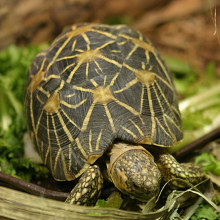
The science of tipping turtles
If you've ever seen a ladybird waggling its legs frantically in the air while it struggles on its back, you'll know that some animals with hard round shells can get themselves into serious trouble if they are accidentally flipped over. Beetles tend to use their legs or wings to save themselves from the tricky situation, and flat-shelled turtles that live in freshwater have long, muscular necks that they use to flip themselves back over if they happen to get accidentally turned onto their backs.
But there's another group of shelled animals that have much more trouble righting themselves - tortoises and turtles that live on land have much shorter legs and necks and some of them have real trouble getting off their backs - indeed, early explorers and sailors used to take giant land turtles with them on long journeys across the oceans as a source of fresh meat, keeping upside down so they wouldn't wander off around the ship.
 Now scientists from the Budapest University of Technology and Economics in Hungary have conducted a study of land-based turtles in the wild and developed a mathematical model of how well different shaped shells can naturally right themselves if turned over - so, essentially, if you pushed an empty shell along the ground, how likely is it that it would land right way up.
Now scientists from the Budapest University of Technology and Economics in Hungary have conducted a study of land-based turtles in the wild and developed a mathematical model of how well different shaped shells can naturally right themselves if turned over - so, essentially, if you pushed an empty shell along the ground, how likely is it that it would land right way up.
And it seems that nature has elegantly equipped some turtles with shells that automatically right themselves if they are flipped over.
The very tall domed shells of star tortoises have a natural tendency to roll back into an upright position, since they have what is known as a mono-static shape, which effectively means there is one position that they are most stable in - and that is the right way up.
Some other shells that are flatter have two stable positions, on their front and on their back, which means that they are more likely to get stuck on their backs that the high-domed shells. Worst of all are the turtles with shells that have even more stable points, so not only can they get stuck on their backs and fronts, but also on their sides, so they are much more likely to stuck halfway through trying to roll back onto their fronts.
And these self-righting high domed shells are a very neat geometric solution to the problem of turtles getting stuck on their backs - but we don't see all the land-based turtles with high shells because there are other important factors that determine the shell shape including the ability to dig in the ground and to control loss of water from the body.

12:48 - Broccoli combats cancer-causing UV damage
Broccoli combats cancer-causing UV damage
President Bush might have refused to eat it, but if he wants to ward off skin cancer perhaps he should give Broccoli the benefit of the doubt because new research suggests that it powerfully mitigates against damage done to the skin by UV radiation...
Writing in PNAS, Johns Hopkins researcher Paul Talalay and his colleagues applied a broccoli-extract to small patches of skin on the backs of six volunteers over a three day period. The subjects were all asked to avoid broccoli and other cruciferous vegetables for a week before the study. The treated area, together with a similar-sized untreated area used as a control, was then irradiated with a dose of ultraviolet light and a chromometer, a colour-sensitive device, was used to measure the redness of the skin afterwards.
The team found that the broccoli-treated patches of skin were, on average, 37% less burned (judging by their degree of redness) than the untreated patches of skin. The team have previously found that a component of broccoli, called SF - sulforaphane, can trigger the production of an effect known as a "phase 2 response" in treated cells. This involves switching on genes such as NQO1, GSTA1 and haem oxygenase 1, which are known to protect cells from damage produced by agents like UV.
"This is the first demonstration that a human tissue can be protected directly against a known human carcinogen," Paul Talalay said. "But this is not a sunscreen," he cautions, because it doesn't block UV, just enables cells to better handle its effects. So instead he thinks that the effect might be useful as an add-on in protecting people from UV, especially amongst people at increased risk of skin cancer, such as inidivuals who are immunosuppressed.
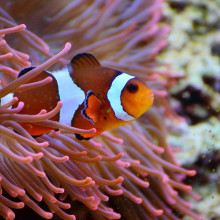
Why don’t fish get lost in the ocean?
Fish have all sorts of senses that they use at different stages in their lives to know where they are; they can smell, they can hear, they may have the ability to sense magnetic fields. Because Fish eggs float around coral reefs, you would expect to get a mix of genetically different fish on different reefs, but research shows that there are clusters of fish that stick to the same reefs.
Reefs are actually very noisy - you can hear fish nibbling at coral, and things like snapping shrimps adding to the noise. By making artificial reefs and playing this noise in some, but not in others, researchers saw that fish would stay around the noisy reefs - proving that the fish could hear the reef. There is also evidence that fish can smell similar fish - which could be how salmon know which river to return to.
Why do you get goose bumps when you hear some music?
This is a result of an emotional response to the music. Goosebumps form at the base of a hair, where the hair sticks out from the skin. When hairy animals are scared they look bigger, and this would have applied to us when we were much hairier animals. This is because all the hairs stand on end - they are lifted by muscles called erector muscles - piloerection is the term for hair standing on end. When you're scared, or have an emotional response to something, these muscles make your hair stand on end - making you look bigger and reducing heat loss by trapping more air. This is controlled by a region of the brain called the hypothalamus, which controls the sympathetic nervous system - the part involved in the 'fight or flight' response. If you are threatened, you need to look bigger to scare off an opponent, and also look redder, as this suggests more testosterone and more anger.
So when a piece of music excites you, your hypothalamus can respond by exercising the fight or flight response, and so you get goose bumps!
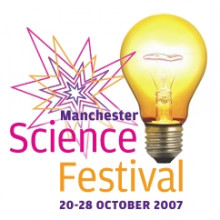
19:12 - The Manchester Science Festival
The Manchester Science Festival
with David Price, Science Made Simple; Johnny Ball
We are very proud to announce that our very own Chris Smith has become the first person to win the Josh award, a new award recognizing innovation in science communication, awarded by the Manchester Museum of Science and Industry. This took place as part of the first Manchester Science Festival, and so Ben Valsler and Dave Ansell went to Manchester to join in the festivities!
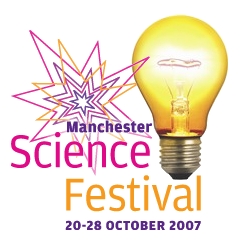 Ben - The 20th-28th of October 2007 marks the Manchester Science Festival. And of course, where there's science, there will be Naked Scientists, so we've come to Manchester Piccadilly train station where we're trying out a few of our favourite Kitchen Science experiments of the unsuspecting people of Manchester. So Dave, what have we got lined up for people here today?
Ben - The 20th-28th of October 2007 marks the Manchester Science Festival. And of course, where there's science, there will be Naked Scientists, so we've come to Manchester Piccadilly train station where we're trying out a few of our favourite Kitchen Science experiments of the unsuspecting people of Manchester. So Dave, what have we got lined up for people here today?
Dave Ansell - All sorts of experiments, one of them is putting a Pyrex bowl in some vegetable oil, and it disappears, which actually goes down really well with adults. We've also got a microwave which we've been putting all the things in it which you really want to do at home, but you really can't. We've been putting in soap, which expands and turns into a great big pile of foam; putting in a light bulb, which glows purple and other strange colours; and we've also been putting in wire wool which gives loads of cool sparks.
Ben - And are people enjoying it? Obviously they've come here for a reason, they've come to get a train, they haven't come here to do some experiments. Do you think they're enjoying this interruption?
Dave - It seems like quite a good way of getting the people who have got half an hour to wait for a train, and we can distract them for a bit. We've had lots of people here, many of them said they didn't enjoy science in school, but they seem to be enjoying this!
Ben - I'm here with David [Price] from Science Made Simple, and he's also doing a few little science experiments here. So what are you doing as part of the science festival?
David Price - Today, really, we're having a look at the science of sound. So we have a 'glovophone' here that sounds a bit like this:
[The glovophone gives a low, rasping bass note, a bit like a bassoon] Listen here:
Ben - Now a glovophone, by the looks of it, is a vinyl glove like you might see in a doctors office with a long, brightly coloured tube sticking off the bottom, and there seems to be a plastic drinking straw sticking into one of the fingers. That's actually quite nice, it sounds a bit like a bassoon.
David Price - And the nice thing about it is at one end you get a lot of vibrations that people can actually feel, you put your finger on top of it and it's really tickly - you can feel the vibrations. And out of the other end we have an opening where the sound comes out, so it's linking vibration and sound, sound and vibration.
Ben - What else have you got to explain things here?
David Price - Well what we have here is a, well, it's a recording of Shirley Bassey, but maybe as you've never heard Shirley before. I'll just set her up...
Ben - Okay, well from what I can tell this is an old vinyl record and it seems to have a VW camper van on the top. Now, I've got a record player at home, I quite enjoy listening to vinyl, but I've never listened to vinyl using a camper van...
David Price - What we have here is a camper van, with a little stylus in the bottom of it. It's powered by a battery to run around the record so the needle, that's the stylus, is in the grooves of the record. It's got a little speaker in the top of the van, so it's a miniature record player.
Ben - So instead of the record turning on a turntable, the camper van actually rotates around the record to play the music for you?
David Price - Absolutely, so I'll set it up now and we'll see if we can listen to a little bit of Shirley Bassey...
[A scratchy, slowed down recording of Shirley Bassey plays - almost totally unrecognizable!] Listen here:
Ben - Well it's certainly working... I'm not sure that's how Shirley really wanted people to listen to her though.
David Price - No, no, probably not how she wanted us to listen to her. One of the reasons it sounds a bit strange is that your record player at home knows to speed up going round the outside of the record, and slow down as it gets towards the centre of the record, a shorter distance.
Ben - So when it's towards the outside of the record you have so much further to go for one rotation, so it needs to do that a bit quicker.
David Price - Absolutely, absolutely. But our little camper van here unfortunately doesn't know that it has to do that, and so the sound starts to sound really, really weird as you get closer into the centre.
Ben - Well I think it's probably best that we listen with CD's at home, but David, thank you ever so much and I hope you enjoy the rest of the festival.
David Price - Thank you very much indeed, thank you.
 Ben - Also at the Manchester Science Festival is Living legend Johnny Ball. Now Johnny, do you think it's important that people get the opportunity to engage with science at events like this?
Ben - Also at the Manchester Science Festival is Living legend Johnny Ball. Now Johnny, do you think it's important that people get the opportunity to engage with science at events like this?
Johnny Ball - I think they do [engage people]. I don't think they should all be naked, as you are; you know, I'd like to keep my underpants on! But it's very important that we engage them. The difficulty is in engaging people who aren't interested in science. You can always get the people who are already interested in science in, and there are many more that really would love it if we could only nurture them in and light them up. It's a scientific world, it's a technological world, it's an engineering world and it's a magical world and all of this gets better. We do, scientifically, improve n every aspect of science every year and we've got to tell more people about it, and bring more people in to be the next generation to continue the successes.
Ben - We've been doing a few demonstrations at Manchester Piccadilly today, is there any particular little science experiment that's been your favourite to do?
Johnny Ball - Yes, I have one, and you can do this with either a billiard cue or a normal sweeping brush. Put your fingers about a yard or a meter apart, your hands outstretched about a meter apart, and get somebody, you can do it, to put the brush or the billiard cue on the two fingers. The head, or the thick end is at one end, and the light end is at the other end. So when your fingers come in it's going to overbalance, isn't it?
Ben - I would expect it would overbalance, yes...
Johnny Ball - So close your eyes and slowly bring your hands together. You'll be amazed what happens because you'll still be doing it when your fingers touch in the middle. Explain that!
Ben - That's fantastic! Well we will have to do that in Kitchen Science soon, but thank you ever so much for chatting to us.
Johnny Ball - Pleasure!
Ben - Now Michael and Charlie here have had a go at all of our experiments. So what do you think about having science experiments in somewhere like a train station?
Michael - It's very interesting because people just while they're walking past from out of a train, can have a look at a science experiment and go "Ooh look at that!" It's interesting, so people who wouldn't normally go to something like a science fair walk past and if it's interesting they can just have a quick look.
Ben - So do you think that this sort of thing would encourage you to do more science at school?
Charlie - Yeah, I reckon so. If you're interested in it you're going to want to carry on and possibly even do it after GCSE and do it for A-Level and stuff like that. It's really interesting if you know what it's like.
Ben - Well that's it for the Naked Scientists at Manchester Piccadilly train station as part of the Manchester Science Festival, but next time you're waiting for a train, just think of the science experiments you could be doing!

25:53 - Stem Cell Technologies
Stem Cell Technologies
with Professor Claudio Stern, University College London
Our show this week is all about Stem cells and cloning, which are topics that have received a lot of attention over the years and we're going to try and dig deep and find out just how these methods work and why they've stirred up so much controversy.
To get us started, this week we sent Meera to UCL's centre for Stem Cell Research, to find out the basics of stem cell technology.
Meera - Stem cells...we've all probably read about them in the papers, but what exactly are they? And how are they benefiting scientific research? This week I went to the lab of developmental biology expert Professor Claudio Stern at University College London, to find out how his team create and use stem cells in their research.
But I had to start by asking just what a stem cell actually is...
Claudio - Basically a Stem Cell is a cell that can self renew, which means it can grow for a very long time and retain its qualities. So, it stays the same as it grows through many many divisions. They're found in many places in the adult, and in the embryo, where they divide and produce daughters that differentiate into different tissues of the body. In the adult for example, there is a need for parts of the body to renew constantly throughout life, for example in the skin, where we lose layers of the skin all the time, and so we have stem cells that are specialised in maintaining that so there's a continuous production of cells that will replace the ones that are being lost.
Meera - But you work with embryos don't you in your lab?
Claudio - Yes we do.
Meera - How do you obtain the stem cells that you work with in your lab?
 Claudio - To obtain embryonic stem cells, which are cells that will not only divide for an unlimited period of time in the lab, but also are capable of giving rise to any cell type in the body, we just use very early embryos, in our case we use chick embryos, and so by taking these cells out of the embryo and placing them in a culture under appropriate conditions and in the right medium, some cells will survive to stage at which they will self-replicate for a very very long time and then you can maintain them forever pretty much in the lab.
Claudio - To obtain embryonic stem cells, which are cells that will not only divide for an unlimited period of time in the lab, but also are capable of giving rise to any cell type in the body, we just use very early embryos, in our case we use chick embryos, and so by taking these cells out of the embryo and placing them in a culture under appropriate conditions and in the right medium, some cells will survive to stage at which they will self-replicate for a very very long time and then you can maintain them forever pretty much in the lab.
Meera - Is there a different process used in order to get human stem cells made?
Claudio - In a sense the principle is the same. So, one possibility will be to have a human embryo, a very early embryo and then to take the cells from the embryo and place them in culture under similar conditions to what I described.
Meera - But how could you get stem cells from an adult?
Claudio - One way would be to try and get a biopsy, for example from tissue that contains stem cells, and then place that in culture. Another way, is to take the nucleus of a differentiated cell, which as I said the cell won' divide, but if that is place in an environment which can re-programme it to become embryonic again, like an egg cell, then that nucleus will be reprogrammed and the genetic material of the adult individual will now become like an early embryonic stem cell that can then be allowed to divide in culture and then that will continue to divide and produce identical copies of itself.
Meera - So that's nuclear transfer that method?
Claudio - Yes, that's nuclear transfer.
Meera - Is it actually quite hard for that to result in a growing cell after?
Claudio - Technically it's quite difficult to do, the cell is quite fragile and it's very small. The nucleus is quite fragile itself and it's quite an involved manipulation. It requires very good hands a very good microscopes and only a proportion of the cases will continue to establish a cell that will divide, so one has to do it many times to get a single cell that will establish itself.
Meera - So Claudio, I mentioned earlier that you do most of your work with chick embryos, what are you hoping to find out with your research?
Claudio - Well chick embryos have the advantage that they're easy to get and they're relatively inexpensive, we just get them out of the egg. One of the questions we're trying to resolve really, is what makes a cell be a stem cell? What are the particular genes or gene combinations that establish a cells properties in terms if being able to divide and replicate itself for a very long time without differentiating. At the same time, conversely, what causes cells that are dividing to adopt particular fates? And we're particularly interested in finding out what makes the nervous system and the brain? And what are the cues that cells use top become particular parts of the central nervous system. One of the most fundamental questions in biology is to explain how cells that are genetically identical can adopt different fates so that you end up with a body that's made up of the right proportions of the right tissue types that can function together in a coherent way.
Being able to understand that, hopefully, will get us to a position where we manipulate the fates of those cells to generate, in culture, cells of particular types that might be useful for therapy or other clinical applications.
Meera - So understanding how a cell chooses its fate could enable us to manipulate them into becoming the exact cell that we want. If that becomes possible, then it could transform treatments for conditions like diabetes, where a patients pancreas is unable to produce enough insulin to take up the glucose in their blood. Stem cells could be directed to make more insulin-producing cells, which could potentially be transplanted into a diabetic, enabling them to produce their own insulin and not use injections anymore.
It's this therapeutic potential of stem cells; to provide treatments for numerous conditions that makes the work of teams like Claudio's, so important for medical development.
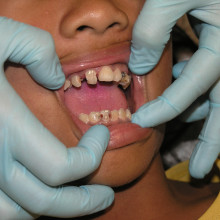
What gives us a toothache?
A toothache is when you have irritation to the nerve supply to a tooth. The most common experience is sensitivity to cold, when you have sensitive teeth, but often it's because you have a hole in your tooth - a carie.
Caries, or holes in teeth, are caused by bacteria, usually streptococcal bacteria, metabolising sugars in your diet into acids, which then drill holes in teeth. Teeth are made of calcium phosphate, and so can be dissolved by acid.
When the hole becomes big enough, the bacteria can start to change the chemical environment inside the tooth, and you can get abscesses. These are painful because they cause inflammation and swelling, or just because of the change in chemistry.
Another less common, but very serious, cause of toothache can be an infection in a sinus. The nerves that supply your teeth run through, for example, the floor of the maxillary air sinus, the sinus behind your cheek. An infected sinus could make you feel that you have a toothache, when there's nothing wrong with your teeth.

33:21 - Stem Cells and 'Stemness'
Stem Cells and 'Stemness'
with Professor Roger Pedersen, Cambridge University
Chris - Now we've been talking about stem cells this week in a big way, and someone who works on them is Roger Pedersen, he's from Cambridge University. Hello Roger,
Roger - Hello.
Chris - Now listening to what Claudio Stern was saying to Meera there, the bottom line is then you have stem cells in tissues, those stem cells are there to make new cells in that tissue when the cells clap out and die. I guess the key question is then; how do those cells become specialized to do that job in the first place?
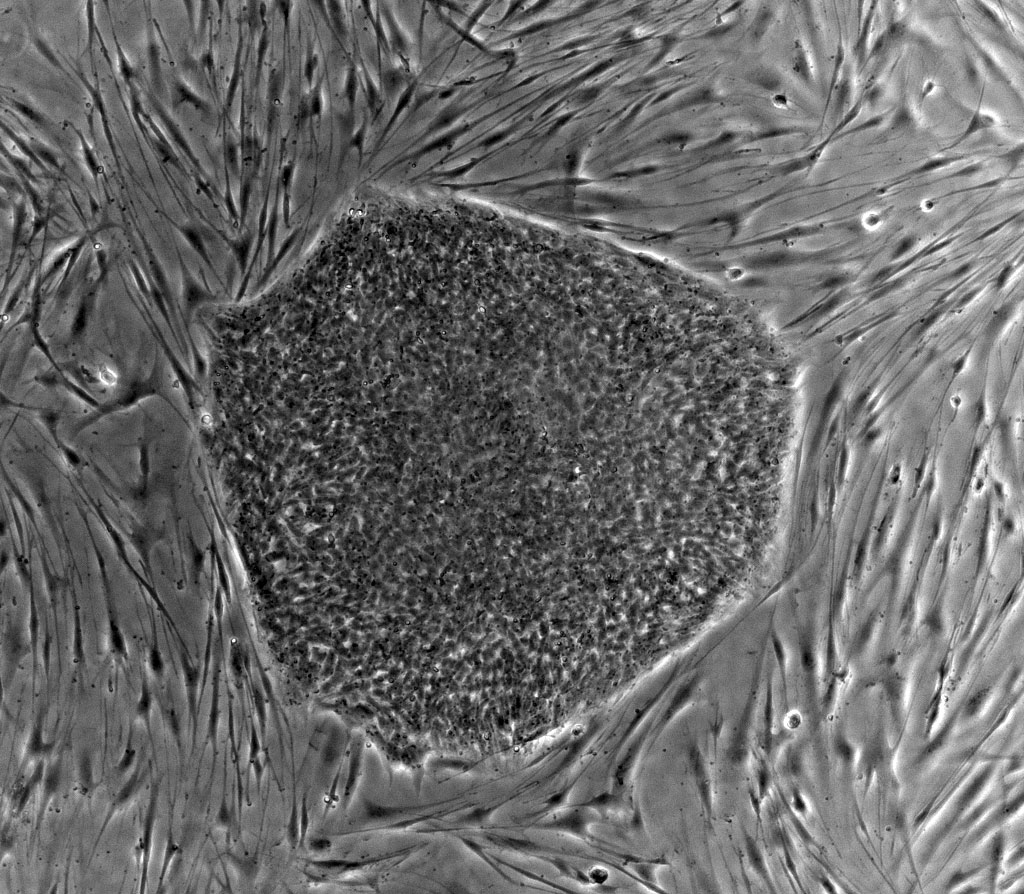 Roger - So, indeed, stem cell biologists start with this question: What is 'stemness'? That is to say what sets stem cells out and makes them special? And that, as you've been hearing from Professor Stern, is the ability of unspecialised cells to renew themselves as unspecialised cells but still retain this ability to specialise. That's a very special quality, we call it stemness. Why this is important in out bodies is that this enables our bodies to replace cells, the specialised cells that either get worn out or get damaged. It enables them to replace them and to renew our tissues using the unspecialised cells that are present in those tissues. That's why we last as long as we do.
Roger - So, indeed, stem cell biologists start with this question: What is 'stemness'? That is to say what sets stem cells out and makes them special? And that, as you've been hearing from Professor Stern, is the ability of unspecialised cells to renew themselves as unspecialised cells but still retain this ability to specialise. That's a very special quality, we call it stemness. Why this is important in out bodies is that this enables our bodies to replace cells, the specialised cells that either get worn out or get damaged. It enables them to replace them and to renew our tissues using the unspecialised cells that are present in those tissues. That's why we last as long as we do.
Chris - So if you have, say if you look at your skin, there will be a population of cells in the base of our skin which are stem cells and know how to make not only new skin stem cells, but also new skin cells.
Roger - That's in fact the case. The cells in our skin that are stem cells are scattered throughout our skin, and there are probably some in our hair follicles too. Certainly a lot of hair follicles in a mouse and we know for example there are a lot of stem cells in the follicles.
Chris - So are those skin stem cells then different to the stem cells that will be in my bone marrow, making new blood cells, and can they swap places and do the same job?
Roger - The stem cells in our skin are almost certainly different than the stem cells in our blood, and that's why our skin makes skin on the outside of us instead of blood. But what we want to know is what do they share? What's this property of stemness that's shared between the skin and the blood?
Chris - And presumably can you swap them round? Can you persuade a bone marrow stem cell, which is easy to get at to become a cell that might be able to be a precursor for cells that make insulin in the pancreas, so you could maybe turn a diabetic pancreas into a normal pancreas?
Roger - Well, to make them useful, stem cells of any kind would be fantastic if you could swap them around like that. Some people say they think you can, but many other people believe you can't.
Chris - So there are many different types of stem cells then, and they're specialised to the job that they do in that bit of the body.
Roger - Indeed.
Chris - But do they understand how they actually get specialised to do that, because that's a big question, isn't it?
Roger - Well right now we're just beginning; we're just scratching the surface to understand what this stuff, this stemness, is. And it seems to be the postponement of the decision about what to be. That is to say the ability to sustain ambiguity, to make a decision later on. And that's a special state of the genes and the DNA in the cell.
Chris - But to what extent is it due to the environment in which a cell finds itself? If I transplant a skin stem cell to my bone marrow, do the cells around it say "Hey, you're in the bone marrow now, so stop behaving as a stem cell and start being bone marrow-ish". Or does it still try and make skin in the bone marrow.
Roger - Well I don't think that exact experiment has been done, people have in fact placed blood stem cells in other places and found that they only made blood.
Chris - Do we know why these cells make these decisions to say right, I am going to be a skin stem cell? How is that achieved? Because that sort of says that sort of cell is now hard wired to do one job, which is intriguing isn't it?
Roger - I think to answer your question the environment is extremely important, and the environment that keeps the cells in early development from specialising is an environment like GCSE-era which keeps you from deciding whether to be a surgeon or a GP. In other words, that's a decision they have to make later, so they aren't exposed to that decision early on.
Helen - I think one of the questions on a lot of people's minds with stem cells is in relation to the applications, the medical applications that they might actually have in the future. I take it at the moment we aren't using them for any diseases right now, but perhaps we would in the future?
Roger - Well actually I should correct this impression that stem cells aren't used in therapy. Blood stem cells have been used in therapy for well over a decade, and will continue to be. Many patients have bone marrow stem cell transplants.
Helen - Is that for leukaemia?
Roger - For leukaemia and other diseases. However, the question is when will the other kinds of stem cells be used, and in particular I'm interested in the stem cells that come from very early stages of development, that come from, in fact, growing fertilised eggs in the Petri dish from in-vitro fertilisation patients. These surplus fertilised eggs can be developed into what we call embryonic stem cells, that seem to have the widest possible ability to specialise into useful tissues.
Chris - So in other words, they haven't made decisions to be any particular part of the body, or they've made fewer decisions, and therefore they can turn into more things at that stage.
Roger - They haven't made any decisions except, perhaps, deciding not to be a placenta.
Chris - Right, so how do you turn those cells into the bits of the body you want, and are we able to do that yet?
Roger - Well that's what we're trying to figure out actually. And in fact we do have some answers but not all of them. It seems that it's a mixture of decisions made by the environment based on the presence of certain things, proteins that make them make decisions, and on the absence of other things. So the absence is just as important as the presence of things.
Helen - And going back to the therapeutic side of stem cells, what kind of things do you think we might be able to work towards in terms of treatments based on stem cell technology?
Roger - So it almost seems certain that the earliest clinical applications that are relevant are going to be not actually based on transplantation, as most people think, but the use of stem cells to discover new drugs, or test the effectiveness or toxicity of new drugs which are developed for treatment of people. In other words just using the cells to develop them in the Petri dish and test those nerves, or heart cells, or liver cells.
Helen - Is that kind of replacing animals as a subject in terms of drug testing and so on?
Roger - Well indeed, I think this is one of the most likely and one of the most intensive uses of stem cells.
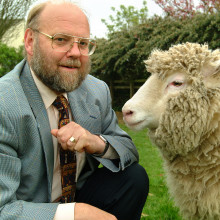
40:10 - Cloning - Dolly and Beyond
Cloning - Dolly and Beyond
with Professor Ian Wilmut, University of Edinburgh.
Chris Smith spoke to Professor Ian Wilmut who, in 1996, cloned the first mammal, Dolly the sheep...
Chris - Thank you very much for joining us, it's 11 years since the Dolly days I guess you could say. At that time, when you created the worlds first cloned mammal, there was no precident for doing this so why were you doing it?
Ian - The ambition was to be able to make genetic changes in farm animals so they would produce proteins needed to treat human disease. That was the aim when we first started.
Chris - So how successful was it? I mean we know you got Dolly out of it, but it must have been tremendously difficult to actually make this happen, which is why you got such an accolade for doing it, but why is it so difficult?
Ian - I think what you have to consider is, the mechanisms which control development. We all came from a single cell of an embryo, which is smaller than a grain of salt, and almost all of our cells have exactly the same genetic information in them. The way in which the many different tissues that we have are formed is because the functioning of the gentic information is changed systematically to produce muscle, skin, bone, in them and all of the different tissues that we have. We used to believe that the mechanisms that bring that about are so complex and so rigidly fixed that it would not be possible to reverse them. The most important thing to come form the Dolly experiment was to show that's not true, because what it's led to now is people thinking well, can we find other ways of re-setting the genetic clock, without producing an embryo and people are making exciting advances with that area.
Chris - Do you have any feeling as to what the chemicals are in an egg that have those special effects of re-setting the genetic clock in a cell that would normally be a skin cell, I mean you used a skin cell from the udder in Dolly didn't you? Do you have any fell for what those factors are?
Ian - Very little, I would say this is the most disappointing thing of the past decade. People have shown that putting in four specific proteins in mouse cells can make those go back to the beginning of development but as far as we know, nobody has been successful in applying the same approach with human cells. And the efficiency is extraordinarily low, we've less than 0.1% of these cells being changed in that way so the teams have a lot more still to learn about this mechanism.
Chris - So to put that into perspective, you are making say 1000 potential embryos and one of them would turn into a potential Dolly.
Ian - The 1 in 1000 is actually cells without making an embryo, th efficiency if you go through the embryo route at the present time is something like 2 or 3 % would become offspring depending on species and all sorts of things like that.
Chris - Why do you think it's so low Ian?
Ian - I think we should still be surprised that it works at all. Because the mechanisms are so rigidly fixed, that's why tissues tend to stay in a particular state in a relatively stable way, and of course the egg did not evolve to achieve to this particular change. What we're doing is taking advantage of mechanisms, which normally function to modify the mechanisms on the DNA coming in from the sperm and different mechanisms for the DNA, which is already residing in the egg at the time of fertilisation. There's no reason why they should work perfectly with genetic information coming in from an adult cell.
Chris - Why do you think it's relatively easier to do this on a mouse than it is say on a bigger animal?
Ian - It may well be that its easier to do experiments with the mouse and therefore more experiments have been done and if it were able to do as many with other species the efficiency would become similar. But there are differences between species. To give you one example, if you put the genetic information into an unfertilised egg during ordinary cloning, you also have to stimulate the egg to resume development. If you do this in the sheep, it really makes no difference at all, as far as we know, whether you introduce genetic information and stimulate development at the same time or differently. In the mouse, you have to delay the process of activation, as we call it, you have to delay the time when you stimulate the egg to resume development. The cow is between the two, it's an advantage to delay the activation but its not actually essential. Just a simple thing like that can have profound effects on the success rate, and again, we don't understand that.
Chris - Some people have said, that when you do this technique, there is a danger that you may genetically alter the individual concerned and they may have some premature ageing phenomenon going on. Is there any evidence for that? And if so, why?
Ian - I don't think that the premature ageing is associated with genetic change in the sense of a mutation, and there probably is some evidence of mutation, but comparatively little. The main problem seems to be whether or not the functioning of the cell is restored to a normal state for an embryo or not. The business of premature ageing is just a small component of resetting the length of bodies called telomeres which are at the end of our chromosomes and each time a cell divides the telomere is shortened, so that beyond a certain point the cell is no longer able to divide. The answer to your question about that is there are one or two experiments, and the Dolly experiment is one, the other I can think of is on cattle carries out in Japan, there are one or two experiments where the telomere length was not restored but in the vast majority of experiments where people have looked, telomere length has been restored perfectly normally.
Chris - Encouraging news. Thanks you very much Ian Wilmut., from the University of Edinburgh. He was the creator of the first cloned mammal, and that was Dolly the sheep back in 1996.
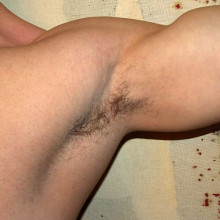
Why Have Pubic Hair?
We asked Christophe Soligo from University College London to help with this question...
I think a good indication of why we have pubic hair comes from the distribution of sweat glands that humans have. We essentially have two types of sweat glands; ones which are called eccrine glands, which are distributed across the whole of the body and they're the sweat glands which we use for keeping cool. On top of these we also have a second type of sweat glands which are called apocrine glands. The distribution of apocrine glands essentially coincides with the distribution of pubic and also axillary hair in the armpit, and the secretion from apocrine glands also contains small parts of cellular material. The cellular material gets broken down by bacteria and that's what creates to a large extent our personal body odour. So the secretion from sweat glands together with the location and the hair creates a nice damp substrate for growth for bacteria.The next step is a bit more complicated than just to smell more attractive to the opposite sex. Some research that's been done where men were made to wear the same t-shirt for several nights running, and women were made to smell the t-shirts after and to rank them according to how attractive they found the smell. The result was that women seem to be able to detect genetic differences in the men, specifically in a genetic complex we call the Major Histocompatability Complex (MHC). What's interesting there is that women were actually going for the men whose MHC composition was the most different to their own. That makes sense in the context of fighting disease because if you have offspring with a very variable MHC it increases their ability to fight off disease.
Do stem cells always reproduce accurately?
We put this question to Roger Pedersen, from the University of Cambridge.
That's a very good question. If we can culture embryonic stem cells in the Petri dish it looks like if we keep them happy, and give them what they want to be healthy, the answer is yes. They seem to do very well genetically for a long period of time. The thing that makes it intriguing is that possibly our bodies have the same kind of molecular insulation and possibly other tools to make stem cells last longer in a stable and completely normal state.
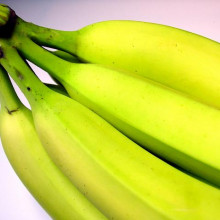
51:48 - Kitchen Science - Home Cloning & Bananas
Kitchen Science - Home Cloning & Bananas
with Dr Tim Upson, Cambridge Botanic Gardens
We've only recently been able to clone animals, but we've actually been cloning plants for millennia, thousands of years. So for this week's Kitchen Science, Ben found out about a clone you can clone at home!
Ben - For Kitchen Science this week we decided that we would talk to you about how you can clone an organism in your own home. That's right, you can actually clone something yourself at home and it's really easy. I'm actually here at Cambridge University Botanic Gardens and I'm with Tim Upson. Hi Tim!
Tim - Hi there.
 Ben - We are looking into cloning plants today, now the cloning we've heard about so far involves expensive lab equipment and carefully removing DNA from one cell and putting it into another. So is that how you do it with plants?
Ben - We are looking into cloning plants today, now the cloning we've heard about so far involves expensive lab equipment and carefully removing DNA from one cell and putting it into another. So is that how you do it with plants?
Tim - No, well thankfully plants are much easier. You can snap off a bit, stick it in some soil and wonderfully it will produce some new roots and you've actually cloned a plant. It's the process of taking cuttings which millions of gardeners will do every year.
Ben - So what is it that makes that new plant a clone?
Tim - It's because it's genetically identical to the parent. So in contrast if you were to sow some seeds, which have come about through sexual reproduction, of course that's mixing of the genetic material and you get variation.
Ben - So literally all you have to do to clone a plant at home is to cut a piece of one plant and plant it in the soil.
Tim - Yes, plants have this wonderful property; their cells can re-differentiate into different materials. So essentially if you take a shoot from a plant it will have leaves and it will have a stem. Usually just underneath the surface of that stem some of those cells, in response to wounding and being cut will actually differentiate into roots. These are called adventitious roots, new roots, and hey presto you've got a plant with all its functioning parts the leaves, the stem and of course, the roots.
Ben - So it's the ability to differentiate into different cell types that means a plant can do this, but do you know why I wouldn't be able to cut off the tip of my finger and plant it in some agar and grow a whole extra hand?
Tim - Yes, in animals they don't have this ability to differentiate cells once they've become a certain part of the body. Unless, I guess, you go all the way back to stem cells which have a similar kind of ability to plants.
Ben - So could you consider plant cells to be very similar to stem cells in that regard?
Tim - Yeah, I think that's a good analogy actually.
Ben - So how do we know that plant cells are capable of turning into all the different cell types?
Tim - We now know that all of these are controlled by what are sometimes called plant hormones or plant growth compounds. A good example is a hormone called Auxin, which encourages rooting. When you go to the garden centre you can buy what's called a plant rooting compound, and that's high in auxins so when you dip the end of your shoot, which you've just broken off, into that powder it gives it a burst of auxin and that encourages the roots to develop.
Ben - This sounds like a really good way for us to get more, and different, plants into our gardens. Are there any problems associated with having plant clones?
Tim - Well there are. One good reason for cloning is because you find a plant which has very good characteristics; maybe it has a particularly delicious fruit or wonderful flower. But of course along with that can equally go some negative characteristics. That can be particularly problematic for example when we talk about susceptibility to pest and diseases. If you do then get an outbreak of it and you've got a mass of clonal plants on an agricultural scale that could spell disaster if you're a farmer.
Ben - So a farmer would clone a particular plant because, for example, it's the best banana and the easiest to sell, so for commercial reasons cloning would make sense because you'll get more of the best type of fruit.
Tim - That's exactly right and bananas are a very good example. Bananas are cloned on a commercial scale, if you go to the tropics and look at the commercial banana plantations they're usually made up of clonal lines of selected cultivars. Bananas are synonymous with something called panama disease which is a fungal disease which actually attacks the water conducting vessels. Some of the favoured banana clones like Gros Michel and now Cavendish bananas which are grown widely throughout the world for commercial purposes have become vulnerable to this fungus. As soon as it starts to attack a field, or essentially move from country to country it can devastate that banana industry, so it can cause big problems and we are talking potentially multi-million pound loss of crops here.
Ben - So how can we avoid this happening?
Tim - Well, it all comes back to encouraging genetic diversity and all we have to do is to look to people like subsistence farmers, they wouldn't just grow one clone they would grow a number, so if one proved potentially vulnerable to pest and disease they've got others that they can look to. Commercially, of course, now they're looking to breed more diversity into bananas and of course breeding in resistance particularly to panama disease is obviously very important and a major goal.
Ben - So while cloning can offer us more and better fruit, it's always best to remember that it would only take a small outbreak of disease to take bananas off the shelves. That's all for Kitchen Science today, we'll be back next week.
Could stem cells treat MS?
I do because we know about a stem cell, which is called the O2A cell which is a stem cell which we think is in the brain already and whenever anyone has a flare up of MS and the nervous system gets attacked by the immune system which destroys the myelin, that surround nerve cells, we think the reason they get better afterwards, at least for a time, is because these stem cells reawaken and produce new myelin-producing cells. Do you think that's reasonable Roger?In fact, there's a team of scientists at Cambridge University working on that very problem!
Related Content
- Previous Human Origins and Migration
- Next Particle Physics Show










Comments
Add a comment